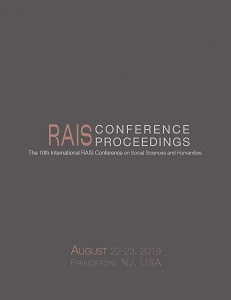A Behavioral Economics Approach to Digitalisation – The Case of a Principles-based Taxonomy
A Behavioral Economics Approach to Digitalisation – The Case of a Principles-based Taxonomy
Author(s): Julia M. Puaschunder, Dirk Beerbaum
Subject(s): Behaviorism, ICT Information and Communications Technologies
Published by: Scientia Moralitas Research Institute
Keywords: Artificial Intelligence Ethics; Behavioural Economics; Digitalisation; Human-Computer Interaction; Nudging; Principles-based Taxonomy and XBRL; Taxonomy;
Summary/Abstract: A growing body of academic research in the field of behavioural economics, political science and psychology demonstrate how an invisible hand can nudge people’s decisions towards a preferred option. Contrary to the assumptions of the neoclassical economics, supporters of nudging argue that people have problems coping with a complex world, because of their limited knowledge and their restricted rationality. Technological improvement in the age of information has increased the possibilities to control the innocent social media users or penalise private investors and reap the benefits of their existence in hidden persuasion and discrimination. Nudging enables nudgers to plunder the simple uneducated and uninformed citizen and investor, who is neither aware of the nudging strategies nor able to oversee the tactics used by the nudgers (Puaschunder 2017a, b; 2018a, b). The nudgers are thereby legally protected by democratically assigned positions they hold. The law of motion of the nudging societies holds an unequal concentration of power of those who have access to compiled data and coding rules, relevant for political power and influencing the investor’s decision usefulness (Puaschunder 2017a, b; 2018a, b). This paper takes as a case the “transparency technology XBRL (eXtensible Business Reporting Language)” (Sunstein 2013, 20), which should make data more accessible as well as usable for private investors. It is part of the choice architecture on regulation by governments (Sunstein 2013). However, XBRL is bounded to a taxonomy (Piechocki and Felden 2007). Considering theoretical literature and field research, a representation issue (Beerbaum, Piechocki and Weber 2017) for principles-based accounting taxonomies exists, which intelligent machines applying Artificial Intelligence (AI) (Mwilu, Prat and Comyn-Wattiau 2015) nudge to facilitate decision usefulness. This paper conceptualizes ethical questions arising from the taxonomy engineering based on machine learning systems: Should the objective of the coding rule be to support or to influence human decision making or rational artificiality? This paper therefore advocates for a democratisation of information, education and transparency about nudges and coding rules (Puaschunder 2017a, b; 2018a, b).
Book: Proceedings of the 10th International RAIS Conference on Social Sciences and Humanities
- Page Range: 45-53
- Page Count: 9
- Publication Year: 2018
- Language: English
- Content File-PDF

